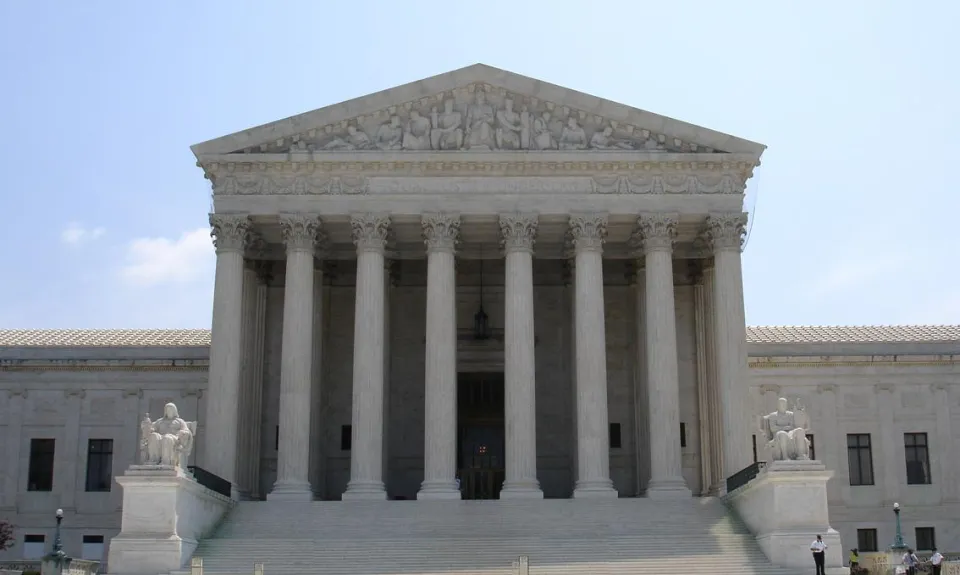The Supreme Court just weighed in on Colorado’s attempt to keep Trump off the presidential election ballot. And, while the ruling seemed clear to the Justices, it’s caused a bit of head scratching for the rest of us.
To help us make sense of this ruling and where things stand for Trump and the election, we asked People For’s Senior Legislative Counsel Paul Gordon to answer a few of our burning questions.
How did this case come before the Supreme Court?
Several months ago, Colorado election officials announced the list of people who qualified to be on the ballot for the March 2024 presidential primary. That list included Donald Trump.
But a group of Colorado voters believed that the Constitution bars Trump from being on the ballot. Specifically, Section 3 of the Fourteenth Amendment prohibits officeholders who engage in insurrection from holding any federal or state office. This protection for democracy was put into the Constitution after the Civil War. Most people had forgotten this provision even existed.
So the Colorado voters went to a state court. They said Trump’s conduct after losing the 2020 election was an insurrection covered by the Fourteenth Amendment. They said he was barred from office, so Colorado officials couldn’t include him on the ballot.
To look into this issue, the judge held a trial that lasted five days. Trump’s attorneys argued that he had not engaged in an insurrection. They also said that Section 3 didn’t apply to the office of the president. And they argued that Section 3 couldn’t be enforced by state officials, but only by Congress.
After weighing all the evidence, the trial judge concluded that Trump had indeed engaged in an insurrection. But the judge also ruled that even so, Section 3 doesn’t apply to the president, so he could still be on the ballot. Both Trump and the voters appealed the decision.
On appeal, the Colorado Supreme Court ruled that Trump had engaged in an insurrection. The state justices also concluded that Section 3 covers the president. Trump appealed this decision to the U.S. Supreme Court.
How did the Supreme Court rule?
The U.S. Supreme Court ruled that State officials can’t bar a presidential candidate from the ballot. All nine justices agreed that it would be too chaotic to have state officials coming to different conclusions about who was eligible for the national office of the presidency.
For Justices Sotomayor, Kagan, Barrett, and Jackson, that was enough to answer the question before the Court. They would have stopped there. But the remaining five justices – Roberts, Thomas, Alito, Gorsuch, and Kavanaugh – went further.
How did the remaining five justices go further? What was the disagreement between Roberts, Thomas, Alito, Gorsuch and Kavanaugh and the other justices.
Although the case only involved the office of the president (which is a nationwide office), the majority issued a holding affecting all federal offices. They ruled that the only way to bar an insurrectionist from federal office is by Congressional statute. Congress has to pass legislation in order for Section 3 to go into effect with regard to not only the presidency, but any federal offices.
As an example of such a law, they cited an existing law criminalizing insurrection and making it punishable by permanent disqualification from federal office. They also cited provisions in a post-Reconstruction law called the Enforcement Act of 1870. That law had empowered federal district attorneys to go to court to have insurrectionists removed from office; but this provision was repealed in 1948.
They gave two examples of Congress putting Section 3 into effect. The first one is a law that is no longer on the books: A provision from the 1870 Enforcement Act empowered federal district attorneys to go to court to have insurrectionists removed from office; but this provision was repealed in 1948. The majority also cited an existing law criminalizing insurrection and making it punishable by permanent disqualification from federal office.
So even under the majority opinion, if Trump were found guilty of engaging in an insurrection, he would presumably be barred from office. But Trump does not currently have to worry about that: Special Counsel Jack Smith is not prosecuting Trump under the insurrection statute, but under other statutes for his election interference scheme.
Justices Sotomayor, Kagan, and Jackson pointed out that it makes no sense to say that Section 3 is unenforceable until Congress passes a law saying how it would be put into effect. Nothing in the text suggests that. No other part of the Fourteenth Amendment (like the Equal Protection Clause) requires a federal law to be enforceable. They pointed out the illogic of having a constitutional provision that Congress was free to negate simply by doing nothing.
The progressive justices also sharply criticized the majority for “shut[ting] the door on other potential means of federal enforcement” of Section 3. They wrote:
The] majority attempts to insulate all alleged insurrectionists from future challenges to their holding federal office.
This is a significant accusation. The progressive justices did not say simply that insulating insurrectionists would be the result of the majority’s decision. They strongly implied that that was the goal of the majority’s decision.
What does this ruling mean for other state challenges to Trump being on the ballot?
The ruling applies to all state challenges. No state may bar Trump from the ballot as an insurrectionist.
Did the majority clear Trump of the accusation of insurrection?
No. The majority did not clear Trump of the accusation of insurrection. They just made it more difficult to do anything about it.
Will this case have any effect on Trump’s immunity claims or the criminal cases he’s facing?
No, this case will not affect the others. The legal and factual issues are unrelated.
Thanks, Paul!
It looks there’s still more work to be done to hold Trump accountable.
